Creation of Security groups, EC2 Instance, adding the ip addresses to inventory file, configure webservice and load-balancer to them, access webpage
 Soumya Biswas
Soumya Biswas
Introduction:
In this module, I will demonstrate the power of ansible to create EC2 instance, security groups in AWS, adding their IP address to the ansible inventory file and configure webservice and load-balancer to the dedicated instances and access webpage with the help of loadbalancer’s IP address.
Requirements:
AWS account with aws_access_key and aws_secret_access_key generated
Ansible Installed in controller node
Tasks:
Step 1 : Create security groups, create EC2 instances and add the dns names to inventory file:
- Open the ansible inventory file and create two groups with the name webservers and loadbalancer.

2. Next gather the below information which need to be mentioned in vars_files to avoid displaying them in actual playbook.
VPC ID
Ports to be used for webservice
Ports to be used to configure load-balancer
aws_access_key
aws_secret_key
image_id
key_name
instance_type
region
ssh_key location
inventory directory location
3. Since, no module of aws is included in ansible-core, this need to be dowenloaded from collection with below steps:
ansible-galaxy collection install amazon.aws
Install boto3 and botocore
Refer the link: Ansible galaxy collection
4. Start Developing the playbook. Mention the file name where all variable are included in vars_files section and write the code to generate the security group. Here the security group has been defined to access the mentioned ports from anywhere (which in in-general).
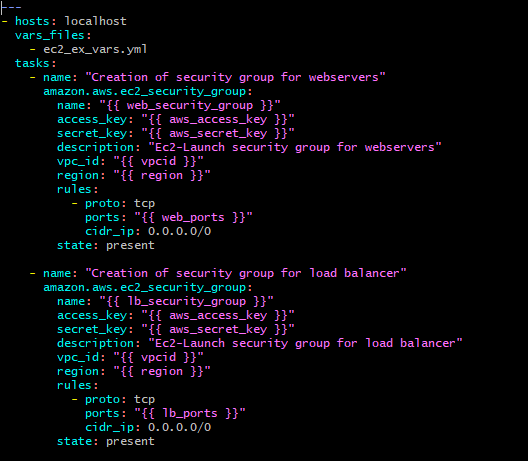
5. Write the code to generate EC2 instance. Here, I have used count and name parameter in playbook. If I omit the count and keep the name, it will generate only one ec2 instance and no further ec2 instance will get generated if I execute it for 2nd time. But if I mention count, it will keep on generating that number of ec2 instances with same name with each execution.

6. I have registered the details in the variables to display the public ipv4 dns names of the generated ec2-instances:
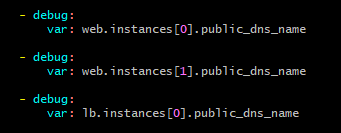
7. Next, I have used lineinfile module to add the DNS names in the inventory file.

8. Now check for the syntax errors with “ansible-playbook — syntax-check playbook.yml” run the playbook with “ansible-playbook playbook.yml” command.
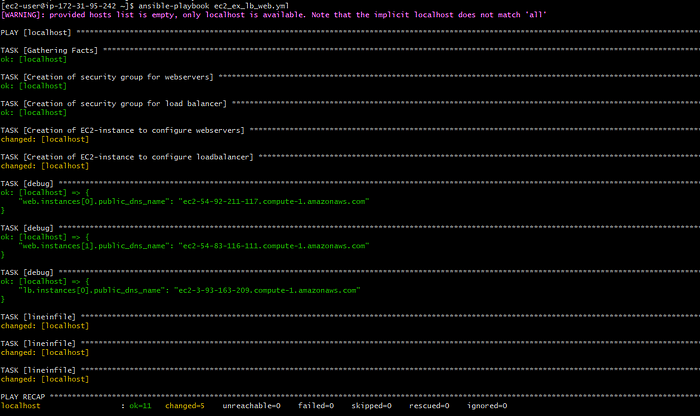
9. We can see that the security groups are created, instances are created and inventory file is also updated.



Step 2: Install and configure webservice and load-balancer and access webpage with load-balancer URL:
In this project, I have used ansible galaxy role to configure the same.
Installed galaxy role with the help of below commands to create the roles for webservers and load-balancer respectively:
ansible-galaxy role init webservice
ansible-galaxy role init loadbalance
3. The above command will create two directories which will have multiple other directories to write variables (in vars/main.yml file), handlers (in handlers/main.yml file), tasks (in tasks/main.yml file), template files (inside templates directory) etc.
[ec2-user@ip-172-31-95-242 loadbalance]$ pwd
/home/ec2-user/loadbalance
[ec2-user@ip-172-31-95-242 loadbalance]$ ls
1 defaults files handlers meta README.md tasks templates tests vars
[ec2-user@ip-172-31-95-242 webservice]$ pwd
/home/ec2-user/webservice
[ec2-user@ip-172-31-95-242 webservice]$ ls
defaults files handlers meta README.md tasks templates tests vars
4. The default path of the role is /etc/ansible/roles. If the role is installed in any different path, that need to be mentioned in ansible configuration file after roles_path. Here, I have used my home directory as the roles_path and mentioned the same in config file.
roles_path=/home/ec2-user:{{ ANSIBLE_HOME ~ "/roles:/usr/share/ansible/roles:/etc/ansible/roles" }}
5. Next, to configure the webservice, I mention all the variables in vars/main.yml file as below:

6. Next, in templates directory, I have created a template file index.html.j2 which will be used as webpage and the content of the webpage is to display hostname, linux distribution and kernel name in the webpage. I have created a config file webserver.conf.j2 to define the new document root in place of default document root (/var/www/jtml).

7. In handlers/main.yml file, I have written the below code to call handler:

8. In tasks/main.yml file, I have written the below code to install the webpackage, create the new document root directory, place the webpage into it, place the new config file in /etc/httpd/conf.d directory and start the webservice. After the tasks for webpage and config files there is a notify attribute which will notify the handler.
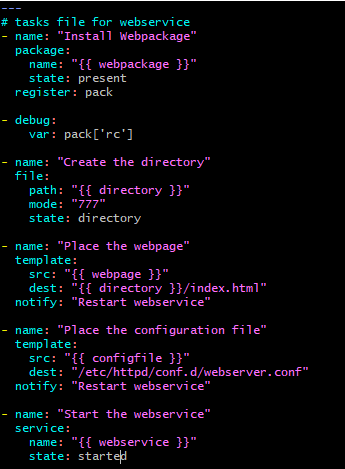
9. In the same way, a playbooks has been generated to install and configure the haproxy loadbalancer. The configuration template file has been created in loadbalance/templates directory.
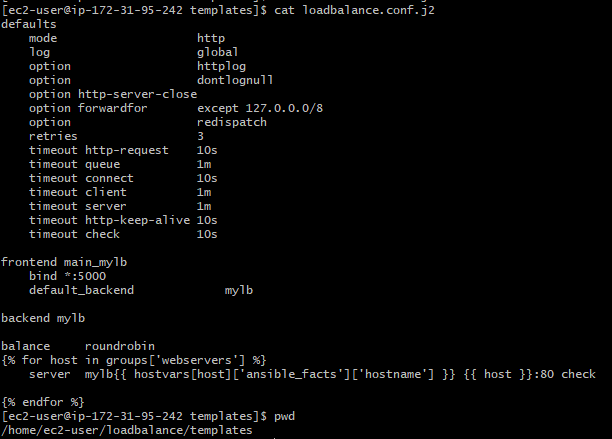
haproxy config file
10. The handler file has been written in loadbalance/handlers/main.yml file.
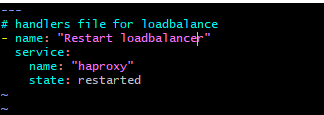
11. The tasks are written in loadbalance/tasks/main.yml file to install haproxy application, put the configuration file in /etc/haproxy/conf.d location and start the haproxy service and to notify the handler to restart the service in case of any configuration change.
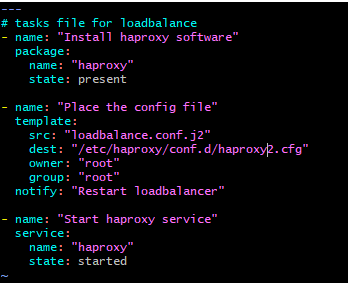
12. After all these done, I have created a new playbook out of all these folders from where I can execute the ansible commands to run there roles.
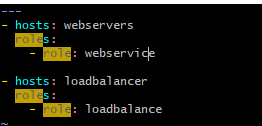
13. Once after the execution I can see that the webpage is displaying the expected result.
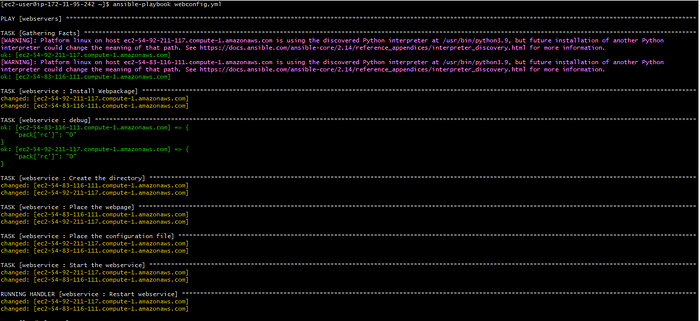



Thank you!!!!
Subscribe to my newsletter
Read articles from Soumya Biswas directly inside your inbox. Subscribe to the newsletter, and don't miss out.
Written by

Soumya Biswas
Soumya Biswas
I am a software engineer and I love to work and explore new technologies like Linux, Ansible, Docker, Kubernetes, terraform, AWS and like to demonstrate the use cases